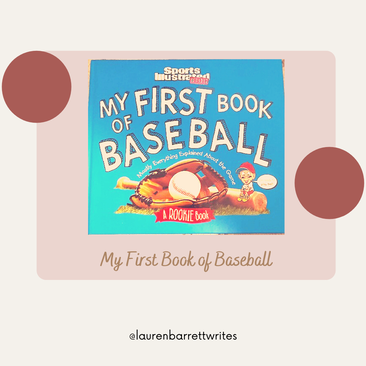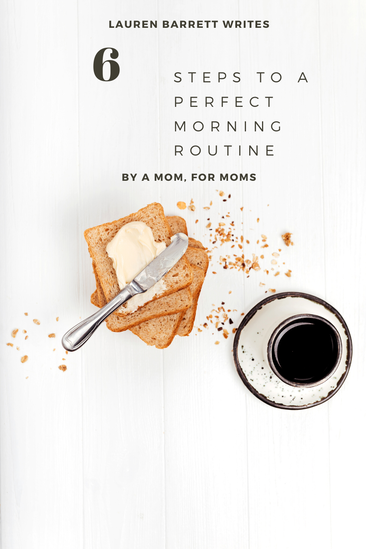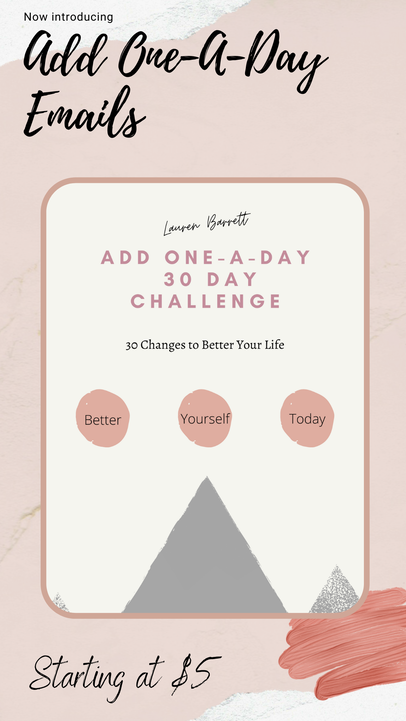|
This article contains affiliate links.
When I received the Hatch as a gift for my baby shower, I never expected to love it so much. Read a full review here.
But I was surprised to learn that there are more ways to use the Hatch other than what it is marketed for - a sound machine to lull a child (and a parent lol) to sleep. It has done a great job at that with my 2-year old toddler In fact, so well, I don't see us quitting it anytime soon. However, as I have been using it, I realized that it has a number of surprising ways to use it for any age with your children. And if you want to get creative, you can even adapt these strategies for yourself or other adults. Here are 5 ways to use the Hatch.
1. Morning Wake-Up Call
The Hatch has different colors and sounds, and with the program feature you can program it to change colors and sounds at different times. Even if your child isn't using the sound during the night, you can program a calming sound and color (ie. light blue and birds chirping) as a morning wake-up call. Your child can be conditioned to learn that once that sound or color comes on, he can get out of his bed and room and come get you. Or you will come get her out of the crib. Or your teenager has to get out of bed on the weekend. Or you need to get up yourself. Or, or, or. The research-based calming sensation of both the sound and colors make it much easier to get up. They aren't jarring and abrupt. But, rather, a gentle easing into the day. A cool feature is that you can program the color or sound to get brighter and louder, which is great for anxious kids who are impatient to get out of their room. Pro Tip: Have the sound and light come on and then gradually have it get louder and brighter over a 15 minute period, so your eager child doesn't feel as if he is waiting forever.
2. Quiet Time or Time-Ins
If your child has stopped taking naps, I highly suggested implementing quiet time, and I also recommend doing time-ins regardless of your child's age. During the quiet time or time-in period, have the Hatch set to one color. I would use red as that signifies that no one can move or leave the designated place. When you have decided that quiet time is over, the color will switch to a new color, like green, and all parents or child are free to move or leave. Pro Tip: Play soothing music, like the lullaby sound, to keep your child relaxed and playing quietly in her room.
3. Homework Time
Not all kids find doing homework enjoyable. Some absolutely detest it. So to make it a lot less daunting and a more pleasurable experience use the Hatch. A 2017 study suggests that white noise and other soothing nature sounds can improve your kids learning, memory, and overall mood. Put on the pacifying melodies and gradually lower the sound and dim the lights to indicate that homework time can end. Pro Tip: Program the Hatch for Homework Time for no more than 30 minutes. After that, the optimal time for attention starts to decrease.
4. Play Stations
Set up play stations around the house. For example, an arts and craft station, an open-ended toy station, a reading station, an exercise station, a water station, or an outdoor station. Then, program the Hatch for each station for about 10 minutes. When a station ends, a sound or a certain color will change on the Hatch indicating it's time to move onto the next activity. Pro Tip: Do not have any of the other toys or objects from the other stations out in plain sight until it's time for that station to begin. Otherwise, your young kid will be distracted. A child is more likely to play with a toy when there are fewer toys around.
5. Nighttime and Naptime Routines
The goal when getting a child ready for bedtime and nap is to create a consistent, calming environment. The Hatch helps with this. Research shows that the colors pink, green, and blue promote rest, tranquility, and peace, so turn off the lights in your child's room and program the Hatch to switch on those colors. Then, program the Hatch to play soothing melodies that signal your little one's sleepy cues. Viola! Sleepy toddler. This works for adults as well! Pro Tip: Choose the lullaby or running water sounds. They are calming, but not strong enough to put your kid to sleep. Once you put your child down, switch to a stronger sound like the white noise or wind.
The Hatch is such a versatile tool that I highly recommend investing in. It grows with your child and even can be used with parents who are empty nesters. It can calm, signify transitions, and even promote learning and memory. It's my favorite product and worth every penny.
Tell me in the comments if you use the Hatch and how you use it!
0 Comments
This article contains affiliate links of some of my favorite products. Purchasing them is at no extra cost to you.
Spring andliteracy! Two of my favorite things. Being a teacher and having my Master's in Reading Education, I sometimes go a little nuts with buying books or checking out books from the library for my son.
But with spring approaching and warmer weather in the forecast, I thought what better way to combine some of our favorite spring books, literacy activities, and the outdoors all into one neat, little spring package. We are all tired from being cooped up inside and on our computers, so let's get off our devices and outdoors with this ultimate spring literacy guide for toddlers and preschool aged children. 1. Become a Meteorologist With Usborne Weather Books
Spring brings a variety of weather from sunny, rainy, windy, and even snowy days depending on what part of the country you live in. What better way to talk about the different weather patterns your children see, then with Usborne's collection of weather books.
They have the Windy Day, Rainy Day, Sunny Day, and Snowy day. Read these books with your little ones and then spend the rest of the week having your child be a meteorologist and getting outside to track the weather. Use the premade template below or make one of your own. 2. Go on an Alphabet Easter Egg Hunt with Llama Llama Easter Egg
With Easter being one of the premiere events of the spring, it is only fitting we take our kids on an Easter egg hunt, but instead of chocolates and candies inside the eggs (save those things for actual Easter), put magnetic letters inside of eggs.
First, read Llama Llama Easter Egg or any other of your favorite books that feature an Easter egg hunt. Then, take your magnetic letters and put them in plastic eggs. For preschool aged kids, hide the eggs around the yard. Your kids will have to hunt for the eggs to find the letters that spell their names or any other word (Spring, Easter, Jesus, etc). You can add in a time limit or have kids compete against one another for bonus fun. For the younger toddlers, simply have them open the eggs with the letters in them. Your toddlers can try to match the magnetic letter to pre-drawn letters or identify the letter. Either way, your toddlers will delight in the element of surprise of opening egg after egg. 3. Sign Language Scavenger Hunt with Sign Me Up
Spring is the time to try new activities. One of my favorite activities is sign language. I've already written a lot about the benefits of teaching sign language to your children as well as my favorite sign language resource, SignMeUp. So now, let's get outdoors and practice our sign language skills.
First, expose your children to sign language with SignMeUp or ASL Nook. Then go on a walk around the neighborhood trying to check off all the things you can you find on a premade list (see below). Once you find the object, have your little one sign the word. For repeated exposure to a word, make sure you are signing and saying the word yourself, having your kid sign and say the word, and showing them the picture, written, and real life form of the word. Multiple connections for the win. For an added level of competitiveness, split off into teams. Some kids can go with Mommy and some kids can go with Daddy. Whoever can find the most words on the list wins! 4. Go on a Little Blue Truck's Springtime "Drive"
Little Blue Truck is always going on an adventure throughout town and stopping to see his friends. With Little Blue Truck's Springtime, you can too.
Before going on your own cruise, read the book first. Little Blue Truck is a favorite in our house. The books teach sounds, rhymes, onamonapia, and repetition, and they have some beautiful illustrations. After reading the book, step outside into Little Blue Truck's world and recreate the drive he went on in the story. Have your little one hop into his own mode of transportation: the stroller, Cozy Coupe, Power Wheels, or a tricycle. Along the way, Blue sees Sheep, Duck, Goat, Cow, Pig, Bunny, and Hen. You, too, will place stuffed animals or pictures of these animals throughout your yard or neighborhood. As you go on your stroll, stop to collect the animals and talk about what sounds they make. Have them hop into your car with you. End the drive back at the house for a Springtime Celebration with all the animals. Have spring snacks and talk about what you saw on your "drive" as a sequence of events activity. 5. Batter's Up with My First Book of Baseball
Spring brings baseball, and baseball is a favorite in our household, so to honor America's favorite past time what better way to slide into spring with a little baseball literacy.
Start off by reading My First Book of Baseball and talking about all things baseball. Then head to the diamond, real or makeshift, and hit a homerun with this fun activity. You can do it a number of ways.
I hope these books and activities bring joy and a breath of fresh air to a long winter. Let me know what ones you tried and if your kids liked them in the comments. For more activities, subscribe to my newsletter to get the latest info.
This blog post contains affiliate links.
I truly believe that a good night's sleep and a perfect morning routine really set the stage for the rest of the day, especially for us moms. Whether we are spending the day rounding up the kids for a fun family outing or trying to get some work done around the house or at our actual workplace, perfecting our morning routine leads to overall better productivity, confidence, success, and happiness.
That's why I am happy to share my morning routine, which is helping me reach my 2021 goals. After some trial and error once my son came along, I finally feel as if I have nailed it down. While the actual times and order of the steps might have to be adjusted to fit your lifestyle and family dynamics, you will still gain some knowledge on how to set the tone for the rest of the day. Maybe it's by doing one of these five steps and gradually working your way up to doing all five. Or maybe it's doing some during the weekdays and none on the weekends or vice versa. Either way, you are about to make some positive changes into your life by continuing to read. Ready for some BIG changes into your life? Consider purchasing The Add One-A-Day 30 Day Challenge. 30 lifestyle changes to implement throughout your whole day.
1. Wake Up Before the Kids
Once your kids get down a solid sleep schedule and are not waking up at all hours or at the crack of dawn, this will be more feasible. Right now my son seems to fully wake anywhere between 7:00 AM - 7:30 AM. That means I aim to up and out of bed by 6:30 when I am not working (I have to be up earlier when I am working). I like at least a half hour to myself before my son wakes up. An hour is ideal. By now, I have gotten so used to waking at this time, it has just become natural. But if you are just starting out, trying setting your alarm just ten minutes before your kids wake and then work your way up. The key is to take 5 deep breaths, count to five, and just get up. No hitting the snooze and falling back asleep. Science shows that once you are awake in the morning and then fall back asleep, your body will actually feel more tired throughout the day. I understand that this will not happen all the time. Listen to your body. At this point in my life, I normally let my body naturally wake me up when I am not working. Since I have gotten into the habit of rising around 6:00, most of the time I am fully awake by 6:00/6:30 (or sometimes even earlier), so I get up. Other times, I might need the extra sleep, so I stay in bed until 7:00. When this is the case, I still allow myself 15-30 minutes of time to myself even if my son is awake. He is usually happy sitting in his crib talking to himself and playing with his stuffed animals. So no guilt there. The times when I don't get up before my son, I can tell throughout the day. I feel as if I am playing catch up. Do yourself a favor and try this today!
2. Practice Gratitude
The first thing I do after I get out of bed is list four things I am thankful for in my designated gratitude journal. In the past, I have rattled them off in my head, but lately, for me, I have found it to be more meaningful and intentional to write them down. The thing about practicing gratitude is that it can be as trivial or deep as you want it to be. Somedays, I write my husband or my son or my parents and other days I am super thankful for chapstick or my mouthguard I wear at night (How dare those Gen Zers say Millennials are old with their side parts and skinny jeans!). Practicing gratitude is one of the key components to happiness and starting your day off happy is sure to be a catalyst for the rest of the day. It's hard to be upset when you're counting your blessings.
3. Partake in Quiet Time
It's easy to jump right in after you list your four things of gratitude and be flooded with all the noise. The noise from social media, work emails, the news, podcasts, etc. It's a lot so early in the morning. That's why I like to take author, Matthew Kelly's advice and spend some time in the classroom of silence. For me, this could be 10 minutes of prayer, doing a crossword puzzle, reading a book, or eating breakfast in utter and total silence without checking my phone. I had my students try this, and they were amazed at how much they liked it. It's kind of weird and cool to actually listen and be aware of yourself chewing your food. For you, your quiet time could look completely different. That's fine. Just try to spend at least 10 minutes blocking out the chaos of the outside world and tune into your own thoughts before the noise smacks you in your face in a few short minutes. You'll head out into your day much calmer and relaxed. A clear head.
4. Drink One Glass of Water
Ahh water. It's so good for us. I have often heard that sleep and water are two of the most important things you can do for yourself, yet so many of us are not doing it. That's why I like to start my day off with drinking one glass of water. I just chug it, and I instantly feel better and more refreshed. It's amazing how much one glass of water can do for us - our skin, our mind, our digestion, our circulation, and our body temperature. Remember to continue drinking water throughout the day!
5. Review Your To-Do List
I believe that your to-do list should be created the night before instead of wasting time in the morning to do it. That way, you can have a plan of action in your mind the night before, and as soon as you wake up, you are able to execute it right away. But I do like to spend a few minutes reviewing it, so I can have a clear vision of my day fresh in my head or revise any unrealistic expectations based on how I am feeling in the morning. Get a good planner and get into the habit of writing down your daily goals. Schedule in those things that you want to accomplish no matter how big or small they are. On Sundays, I like to get up and review the scriptures ahead of time for mass that day. I schedule it in into my planner, so I don't forget. And when something is written down, it carries more importance. So maybe you should start writing down your morning routine, so you can remember to do it and so you can feel the satisfaction of crossing it off.
6. Make Your Bed
Finally, I like to have a bed made in the morning. There have been studies that show that people who make their beds sleep better and have a more positive life. For me, it shows that I care and appreciate keeping my space neat and tidy. When my space is organized, I am organized. Plus, my bed just feels better sleeping in after it’s been made. Naval Admiral William McRaven, the commander of U.S. Special Operations, agrees. In a famous 2014 commencement speech at University of Texas at Austin, the Admiral said it best. “If you make your bed every morning you will have accomplished the first task of the day. It will give you a small sense of pride and it will encourage you to do another task and another and another," he said. "By the end of the day, that one task completed will have turned into many tasks completed. Making your bed will also reinforce the fact that little things in life matter.” Sometimes, I have to make my bed once my son is already up, but that's okay. I feel accomplished and in control of the day once I have done it. Try it and see how you feel.
As Moms, we are busy and have so many thoughts running through out head throughout the day.
We need those few moments to ourselves in the morning to mentally prep for the day without any distractions. With a little bit of practice, this morning routine will be perfect for you and if the rest of the day goes horribly wrong, you can rest in the knowledge that the morning went well because you were able to control it. See you out there, Lauren
This blog post contains affiliate links.
Our parents always told us not to gossip. Teachers reprimanded us. Friends would ditch us if they knew we were talking behind their backs. TV created a whole series on the perils of gossiping.
But when you become a parent to a toddler, throw out any preconceived notion you have ever had of gossiping because gossiping is about to become your best friend. In fact, gossiping is one of the best positive parenting strategies I have undercovered as a mom.
What is gossiping?
Gossiping is exactly what you know it to be - talking about someone. However, when it comes to our little ones, this time we are going to do whatever it takes for them to hear us. Yes, you heard that right, you want your toddler to overhear you talking about them while pretending that you don't even notice they are there. I'm talking about doing your best exaggerated whisper yell, hands cupped to your mouth, most dramatic imitation of gossiping possible to whomever or whatever (Daddy, a stuffed animal, a toy) But here is the catch. You are not not going to drone on about all the things they did wrong. You are going to reiterate what they did well by using concrete examples. "Psstttt, Teddy, guess what Henry did today? When Mr. Dinger went off, Henry went straight upstairs to get ready for bed without even crying!!! Can you believe that? Should we clap for Henry?" This doesn't mean that you should avoid all mentions of any negative behavior your toddler does. You just want to put the focus on building your child's self-esteem while focusing mostly on the positive.
Why gossiping works?
I first heard of this strategy from the book, "The Happiest Toddler on the Block," by Dr. Harvey Karp. Dr. Karp says that gossiping "green lights" good behavior. He goes on to say that gossiping should start around 15-18 months. Why? It's the same for adults. What do you prefer more: Your husband directly telling you that you are doing a good job as a mom or you overhearing your husband bragging about what a good mom you are to his parents? I would bet that most people would choose the latter. That is because a direct remark to your face could be considered just a nice remark that he has to tell you because he is your husband, but the fact that he said it to someone else not in your presence must mean he really means it! Toddlers feel the same way. If it's being whispered as a secret, Mommy must really mean it. It must be important, and I should pay close attention. Gossiping fills up a toddler's self-esteem cup. It's hard being a toddler. They are often told "no" or they are forced to stay in very strict boundaries. Overhearing all the things they did right makes them confident in themselves and more likely to continue doing those actions.
How I do gossiping with my son?
Gossiping can be done anytime throughout the day, but I make a point to especially do it before bed to recap the day. While we are sitting in the rocking chair having finished reading our nighttime books, I make a point of noticing the teddy bear that sits on Henry's nightstand. I call him Gossip Bear. "Psst...Hey Gossip Bear, come here. I need to tell you what Henry did today." I bring the bear over and make a point to turn away from Henry and face the bear instead. I then proceed to whisper about some of the good things Henry did that day while sprinkling in one behavior that I would like to curb. "When Mommy told Henry screen time was over, Henry only cried for a little bit. He then went over to play with his kitchen. I was thankful Henry did that. Henry also learned to put some of his toys away when it was time to clean up. That made me smile, Gossip Bear. However, Mommy wants Henry to stay in his pack-n-play at Grandma's house. No more climbing out. Henry needs to sleep, sleep in order to play later. He needs to stay in crib. No climbing out." Henry's ear have perked by this point, and I can tell he is absorbing every word. It's rather cute if I do say so myself. Finally, I ask Gossip Bear if we should clap for Henry and we both do. But we are not done. Gossip Bear has something to tell me. I make believe Gossip Bear is whispering something into my ear and then proclaim, "Of course, Gossip Bear, you can give Henry a kiss and hug goodnight." Gossip Bear walks over to Henry and in his own voice asks for a kiss and a hug which Henry is excited to give. The end and as simple as that.
Start using gossiping throughout the day whenever you see your kiddo doing something you want to encourage him to keep doing, and you will sure to see a transformation in behavior. Who said gossiping is always bad?
For more positive parenting strategies check out my new parenting guide Now What? Mindful Parenting Checklists for Life's Hard Moments.
|
Categories
All
|
Proudly powered by Weebly

























 RSS Feed
RSS Feed